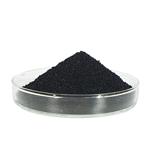- 8-Aminoquinoline
-

- $10.00 / 1kg
-
2025-04-15
- CAS:578-66-5
- Min. Order: 1kg
- Purity: 99%
- Supply Ability: 20 ton
- 8-Aminoquinoline
-

- $0.00 / 1KG
-
2025-04-04
- CAS:578-66-5
- Min. Order: 1KG
- Purity: 98%
- Supply Ability: 1Ton
- 8-Aminoquinoline
-

- $0.00 / 25kg
-
2025-03-21
- CAS:578-66-5
- Min. Order: 1kg
- Purity: 99%
- Supply Ability: 50000KG/month
|
| | 8-Aminoquinoline Basic information |
| | 8-Aminoquinoline Chemical Properties |
| Melting point | 60-65 °C (lit.) | | Boiling point | 174 °C/26 mmHg (lit.) | | density | 1.1148 (estimate) | | refractive index | 1.7080 (estimate) | | Fp | 174°C/26mm | | storage temp. | Keep in dark place,Inert atmosphere,Room temperature | | pka | pK1: 3.99(+1) (20°C,μ=0.01) | | form | Crystalline Powder | | color | Green to beige-brown | | Water Solubility | slightly soluble | | Sensitive | Air Sensitive | | BRN | 114474 | | CAS DataBase Reference | 578-66-5(CAS DataBase Reference) | | NIST Chemistry Reference | 8-Quinolinamine(578-66-5) | | EPA Substance Registry System | 8-Quinolinamine (578-66-5) |
| Hazard Codes | Xn,Xi | | Risk Statements | 68-36/37/38-20/21/22-36/38 | | Safety Statements | 36/37/39-26-22-36 | | RIDADR | UN2811 | | WGK Germany | 3 | | RTECS | VA9627000 | | Hazard Note | Harmful/Irritant/Air Sensitive | | TSCA | Yes | | HazardClass | IRRITANT | | HS Code | 29334990 | | Toxicity | mmo-sat 50 mg/plate MUREAV 39,285,77 |
| | 8-Aminoquinoline Usage And Synthesis |
| Chemical Properties | green to beige-brown crystalline powder | | Uses | 8-Aminoquinoline is used as pesticide and pharmaceutical intermediate. It has been used in the preparation of base-stabilized terminal borylene complex of osmium. It is also used in the spectrophotometric determination of bivalent palladium. | | Preparation | Synthesis of 8-aminoquinoline: Under an ice bath, sulfuric acid (2.0 mL) was added onto quinoline (5 mmol, 1.0 equiv) then 65% nitric acid (3.0 equiv) were added dropwise and stirred for 4h at rt. The mixture was poured into the ice water and neutralized with NaOH; and then extracted with dichloromethane. After dried over Na2SO4 and evaporated in vacuo, used next step without purification.
Mixture of nitroquinolines and 5% Pd/C was solved in ethanol and suspension was saturated with hydrogen gas under atmospheric pressure at 40°C until the starting material was consumed. 2 h later, the mixture was filtered and evaporated. The crude product was purified by silica gel column chromatography, eluting with EtOAc in hexanes to yield the desired 8-aminoquinoline is isolated as a brown solid in a yield of 32%.
Obtained as a brown solid (231 mg, 32%); 1H NMR (500 MHz, CDCl3) δ 8.71 – 8.60 (m, 1H), 7.93 (d, J = 8.2 Hz, 1H), 7.29 – 7.16 (m, 2H), 7.02 (d, J = 8.1 Hz, 1H), 6.80 (d, J = 7.4 Hz, 1H), 4.89 (s, 2H). | | General Description | 8-Aminoquinoline fluoresce moderately to weakly in low dielectric media but not in strongly hydrogen-bonding or acidic aqueous media. The reaction of 8-aminoquinoline with chromium (III), manganese (II), iron (II) and (III), cobalt (II), nickel (II), copper (II), zinc (II), cadmium (II) and platinum (II) salts has been studied. | | reaction suitability | reaction type: C-H Activation
reagent type: catalyst | | Safety Profile | Human mutation data reported.When heated to decomposition it emits toxic fumes ofNOx. | | Purification Methods | 8-Aminoquinoline crystallises from EtOH, ligroin, octane or H2O, and complexes with metals. [Beilstein 22 III/IV 4708, 22/10 V 316.] |
| | 8-Aminoquinoline Preparation Products And Raw materials |
|